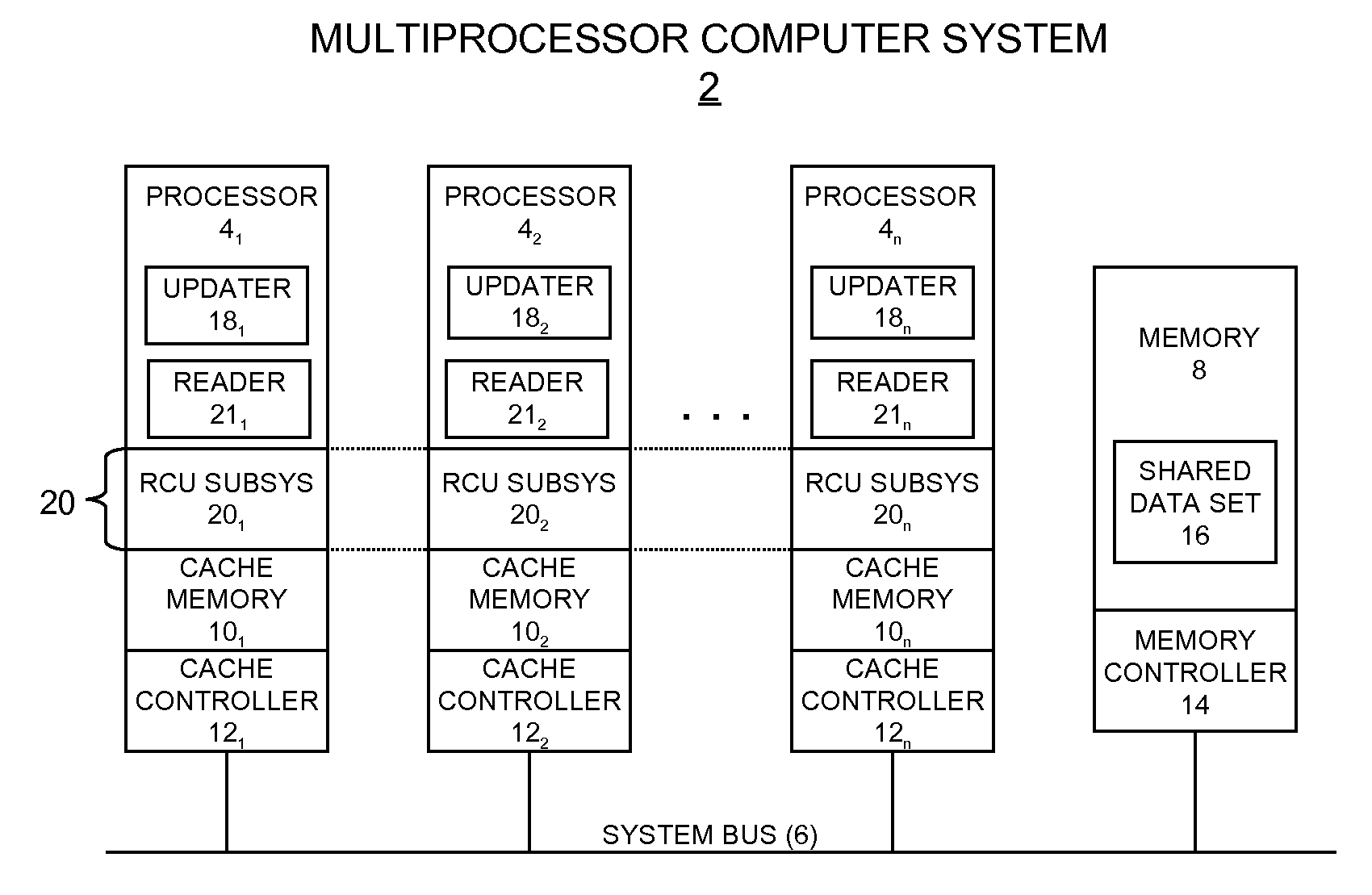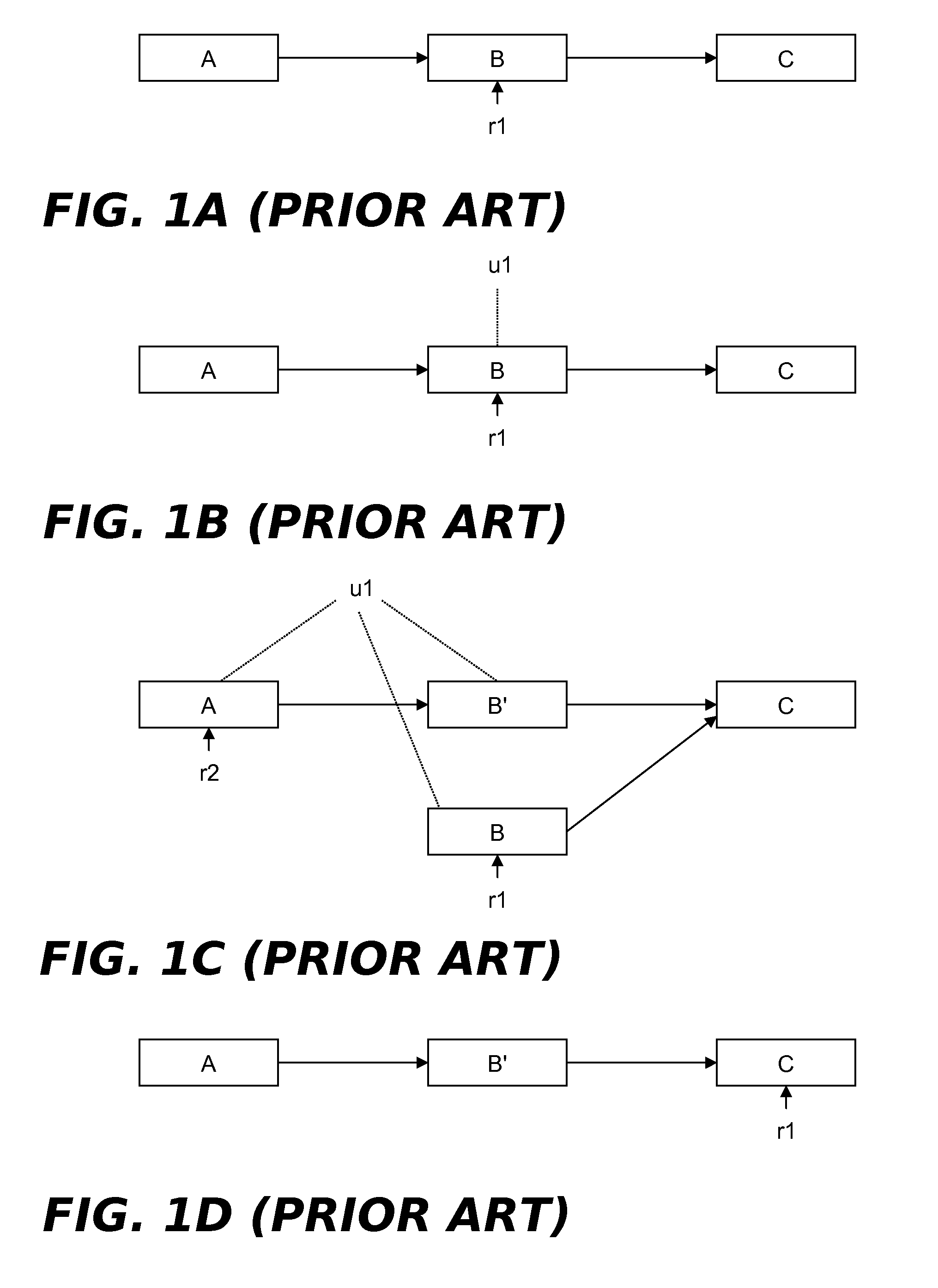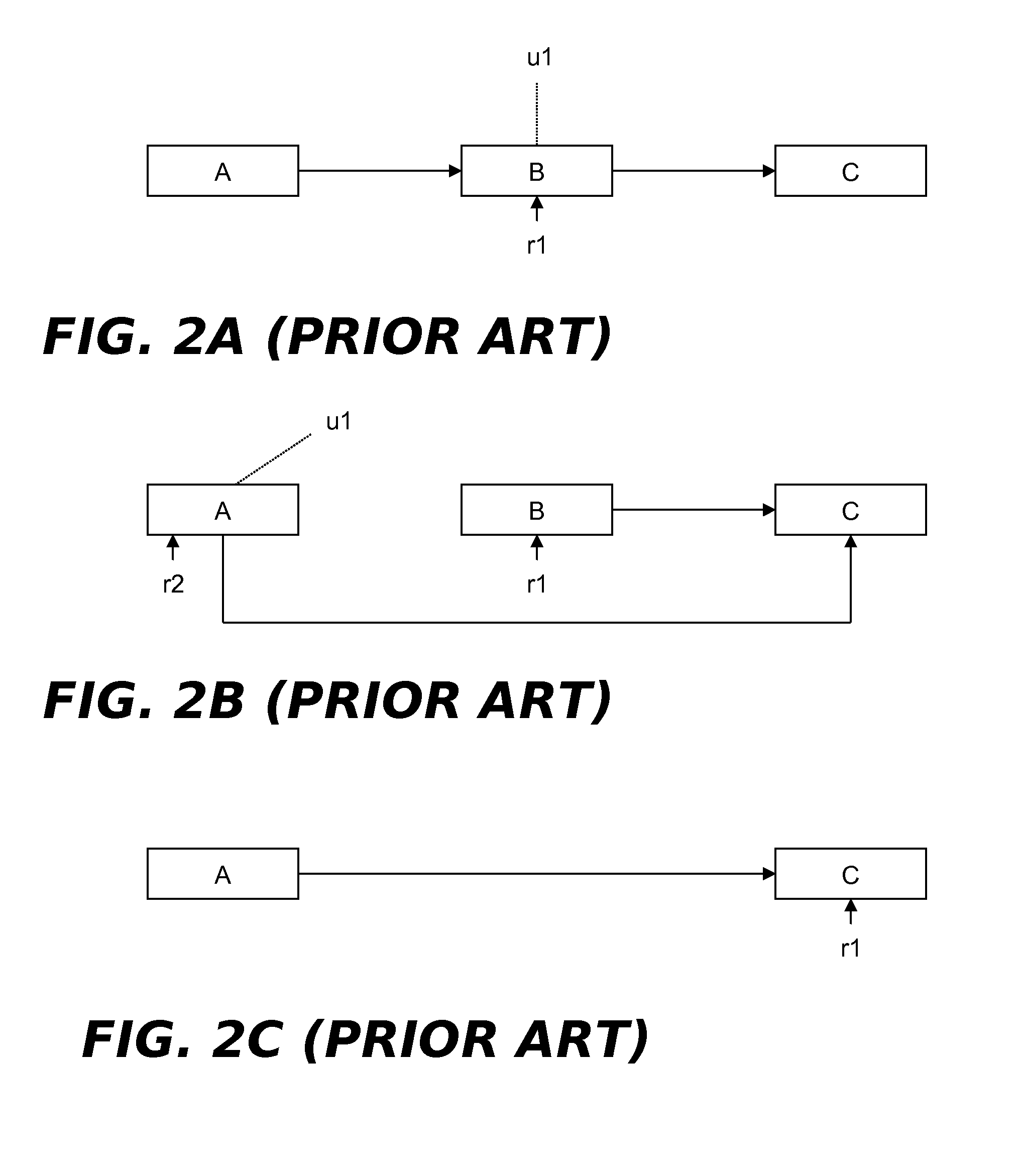Read-Copy Update Implementation For Non-Cache-Coherent Systems
a non-coherent, read-copy update technology, applied in the field of computer systems and methods, can solve the problems of incoherent read-side lock acquisition is quite burdensome, and all caches in the system are incoheren
- Summary
- Abstract
- Description
- Claims
- Application Information
AI Technical Summary
Benefits of technology
Problems solved by technology
Method used
Image
Examples
example embodiments
[0041]Turning now to the figures, wherein like reference numerals represent like elements in all of the several views, FIG. 4 illustrates an example computing environment in which the grace period processing technique described herein may be implemented. In FIG. 4, a computing system 2 includes two or more processors 41, 42 . . . 4n, a system bus 6, and a program (main) memory 8. There are also cache memories 101, 102 . . . 10n and cache controllers 121, 122 . . . 12n respectively associated with the processors 41, 42 . . . 4n. A conventional memory controller 14 is associated with the memory 8. As shown, the memory controller 14 may reside separately from processors 42 . . . 4n (e.g., as part of a chipset). Alternatively, the memory controller 14 could be provided by plural memory controller instances respectively integrated with the processors 42 . . . 4n (as is known in the art).
[0042]The computing system 2 may represent any type of computing apparatus, including but not limited ...
example implementations
[0070]First Example Implementation
[0071]A first example implementation of the record, communicate and flush operations will now be described with reference to FIGS. 7-11. This implementation assumes there some number of processors 41, 42 . . . 4n that each has an associated incoherent cache 101, 102. . . 10n. Per-processor local cache record data structures 28A1, 28A2 . . . 28An are used for the record operation, and a single global cache record data structure 28B is used for the communicate and flush operations. The local record data structures 28A1, 28A2 . . . 28An are implemented in the manner shown in FIG. 5, with each such data structure being implemented as an array comprising a run-length encoding of cacheline information. As discussed above, the run-length encoding may comprise a set of integer pairs of the form {x,y} in which one integer of each pair is the beginning bit index for the corresponding run and the other integer is the number of bits in the run. A global lock ma...
PUM
 Login to View More
Login to View More Abstract
Description
Claims
Application Information
 Login to View More
Login to View More - R&D
- Intellectual Property
- Life Sciences
- Materials
- Tech Scout
- Unparalleled Data Quality
- Higher Quality Content
- 60% Fewer Hallucinations
Browse by: Latest US Patents, China's latest patents, Technical Efficacy Thesaurus, Application Domain, Technology Topic, Popular Technical Reports.
© 2025 PatSnap. All rights reserved.Legal|Privacy policy|Modern Slavery Act Transparency Statement|Sitemap|About US| Contact US: help@patsnap.com



